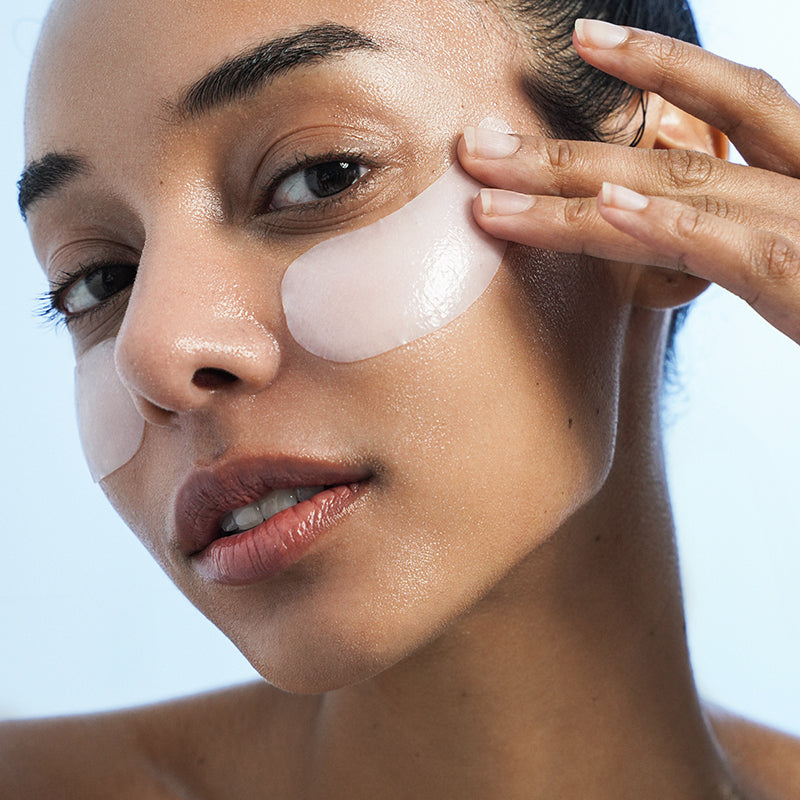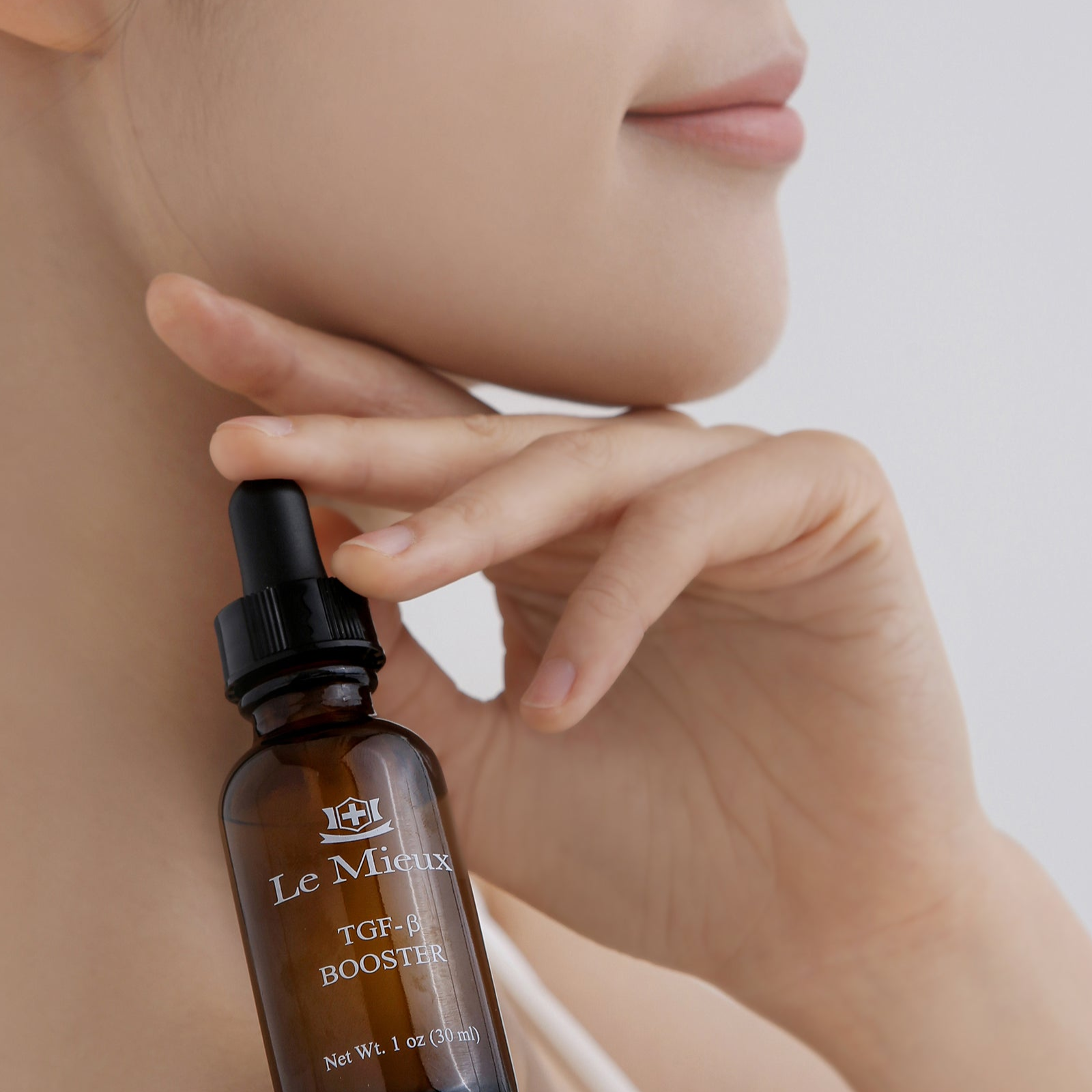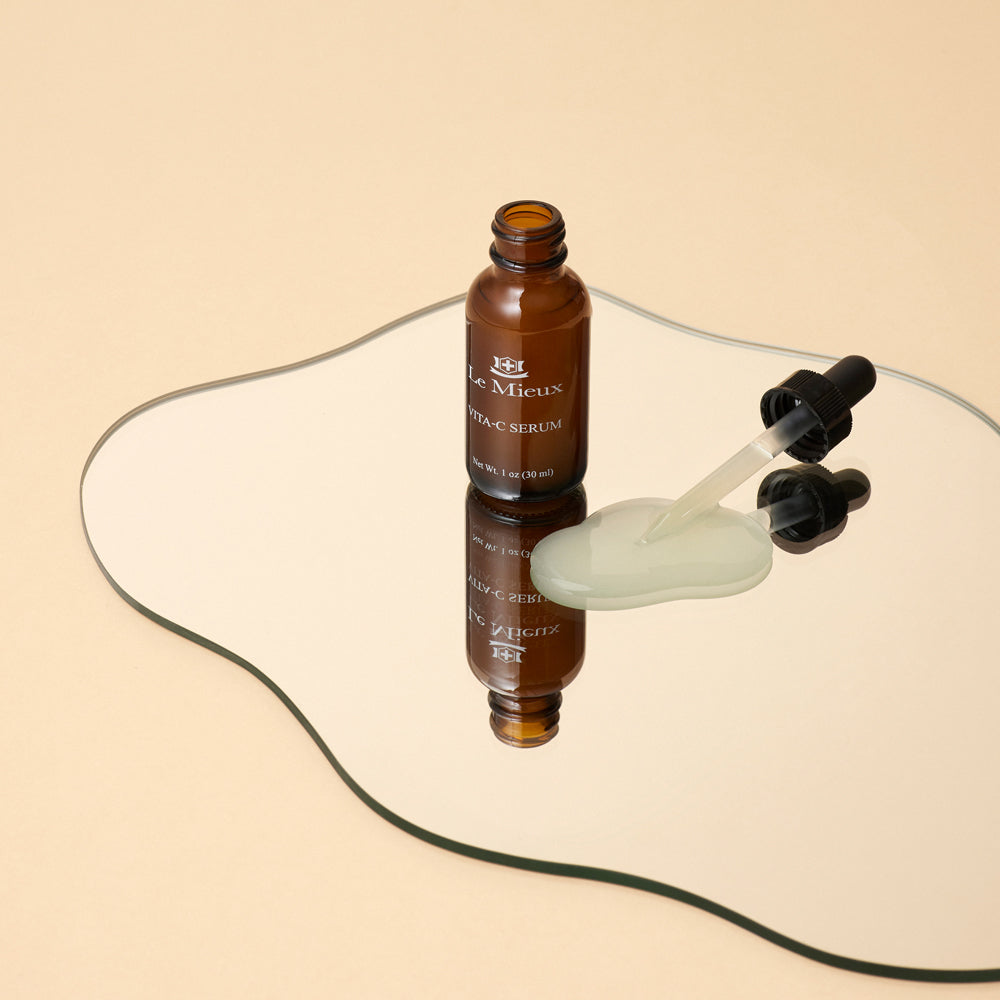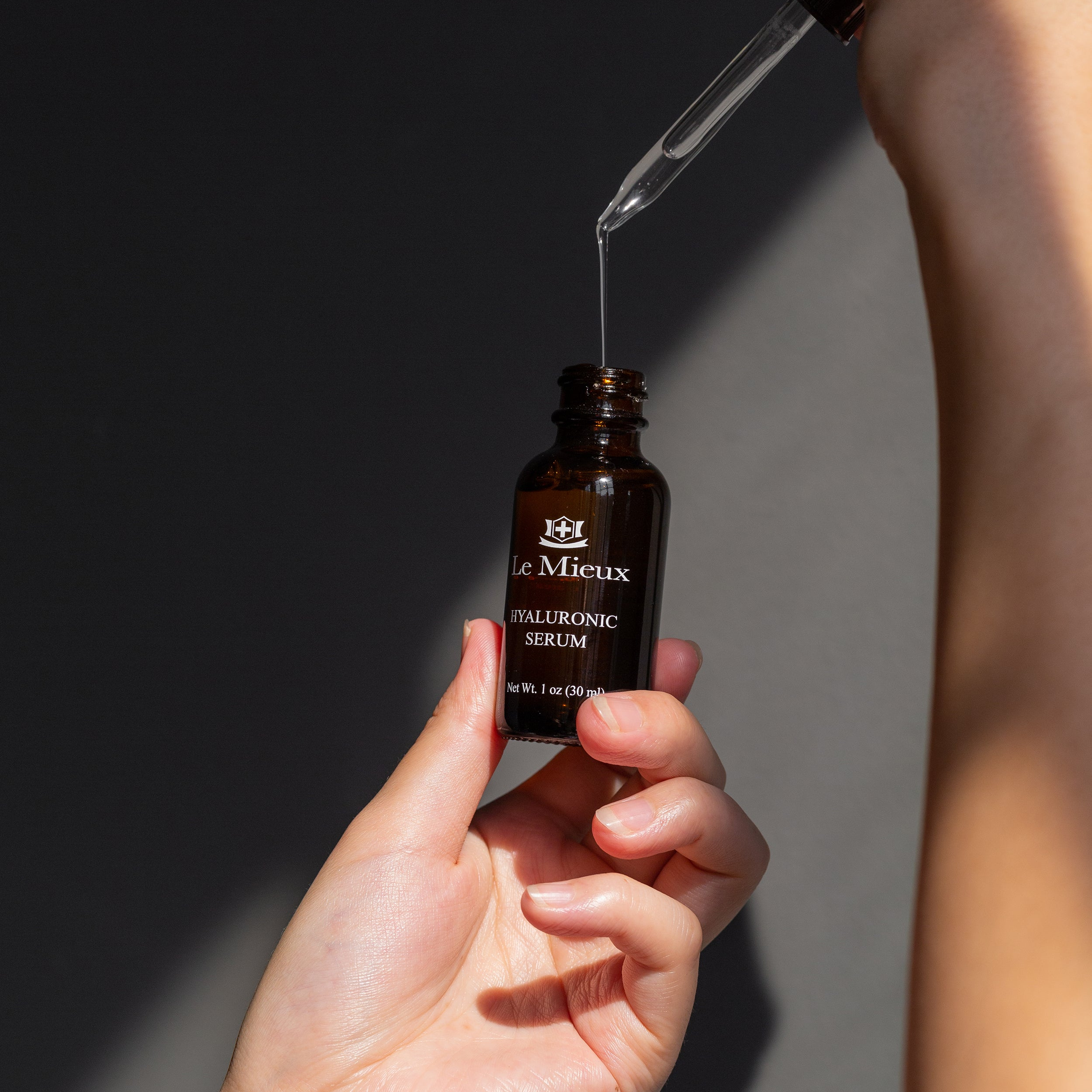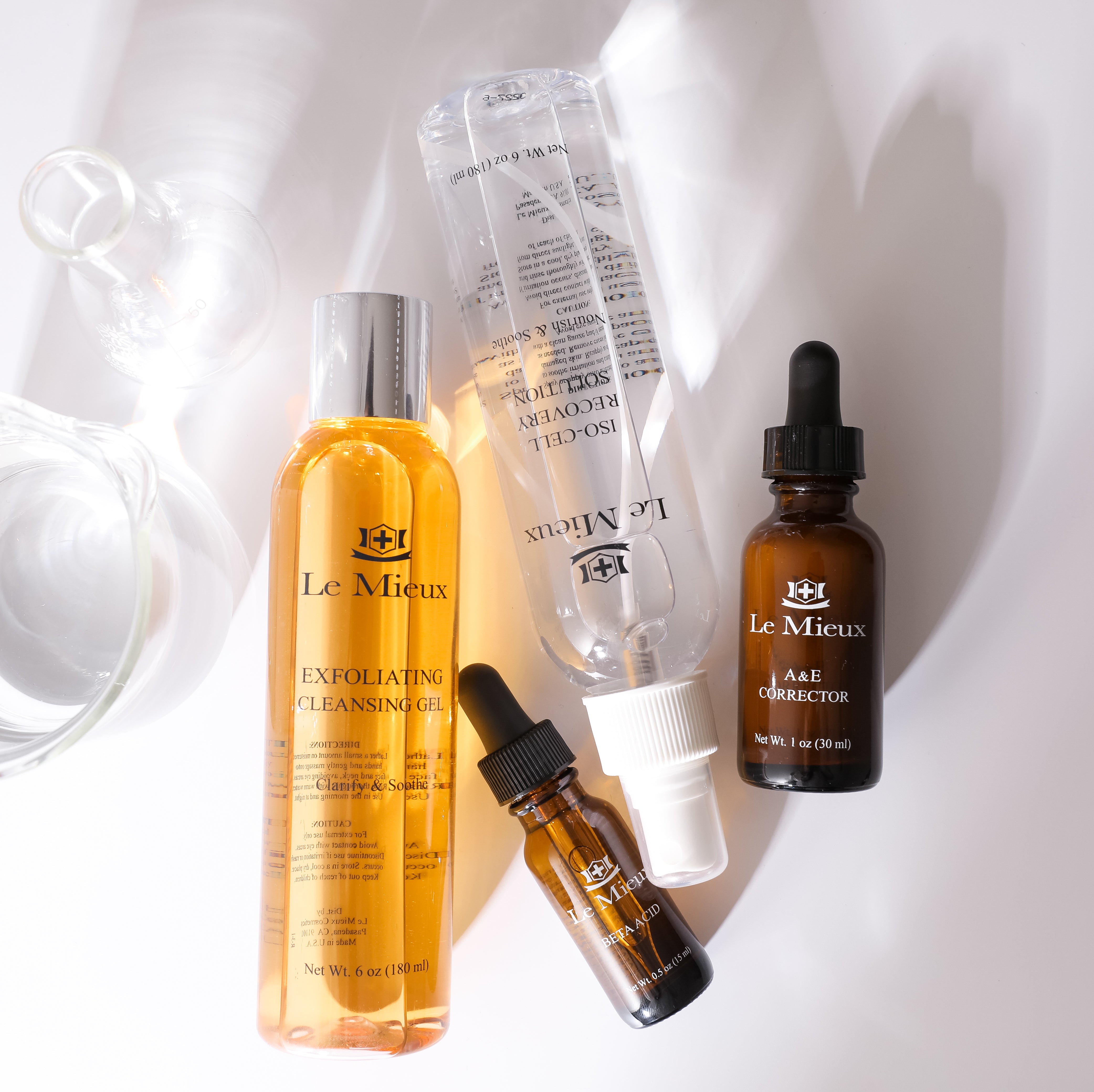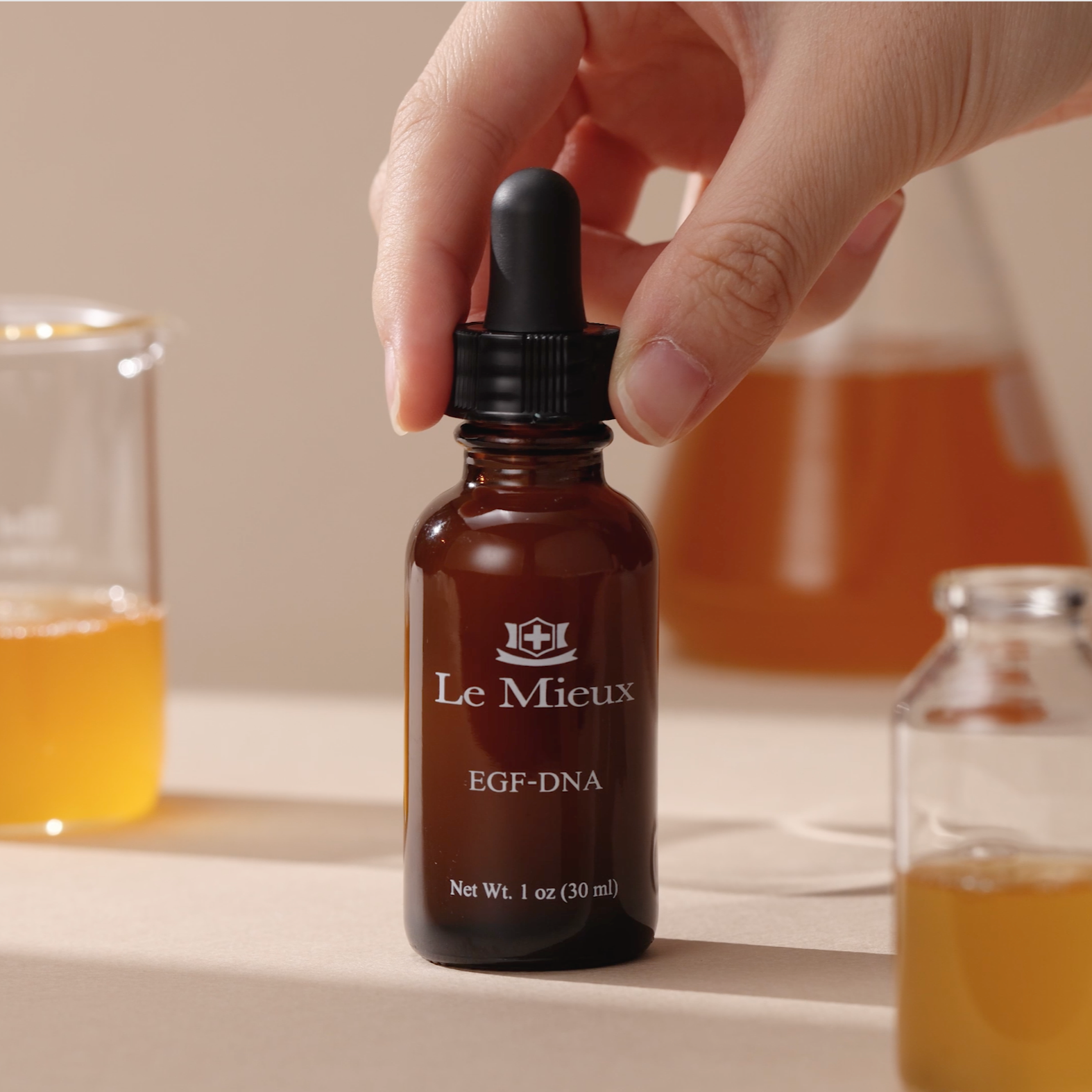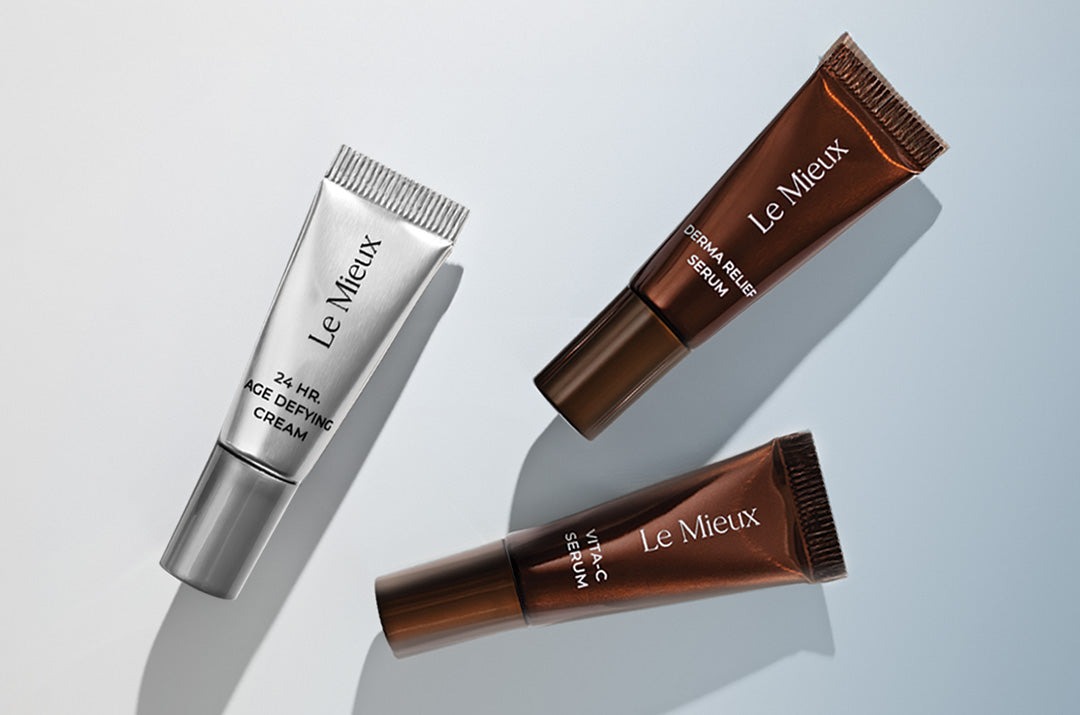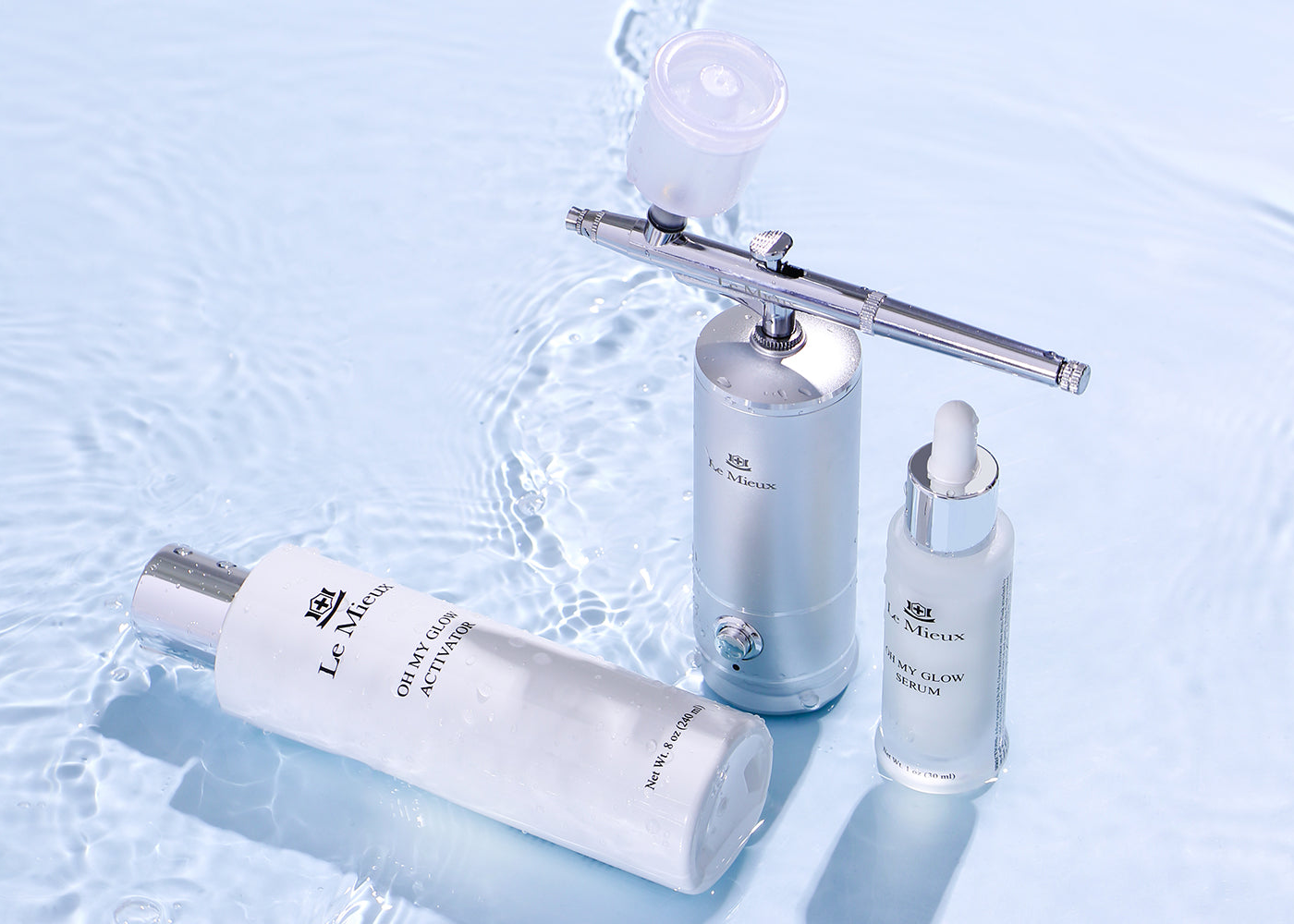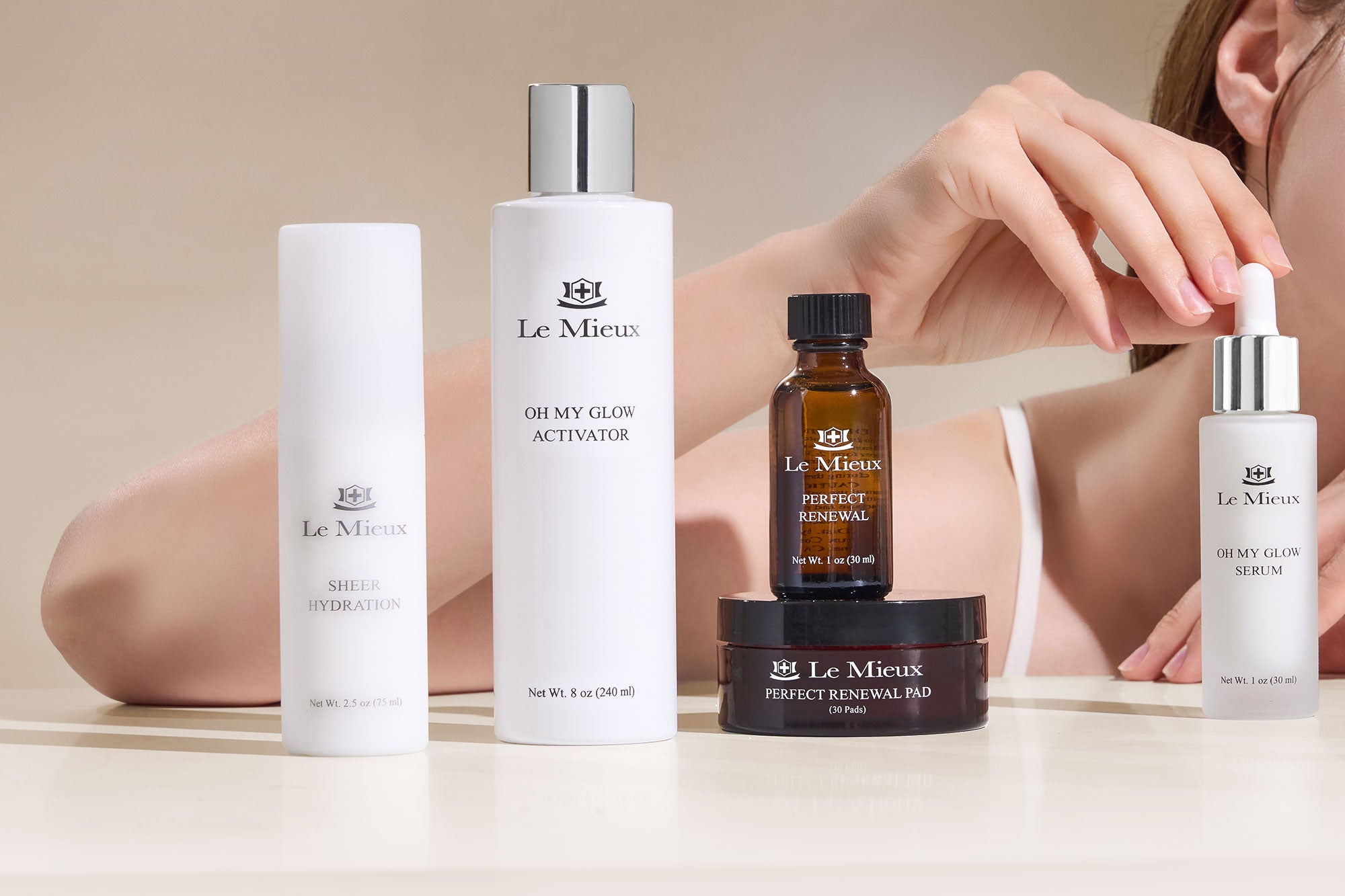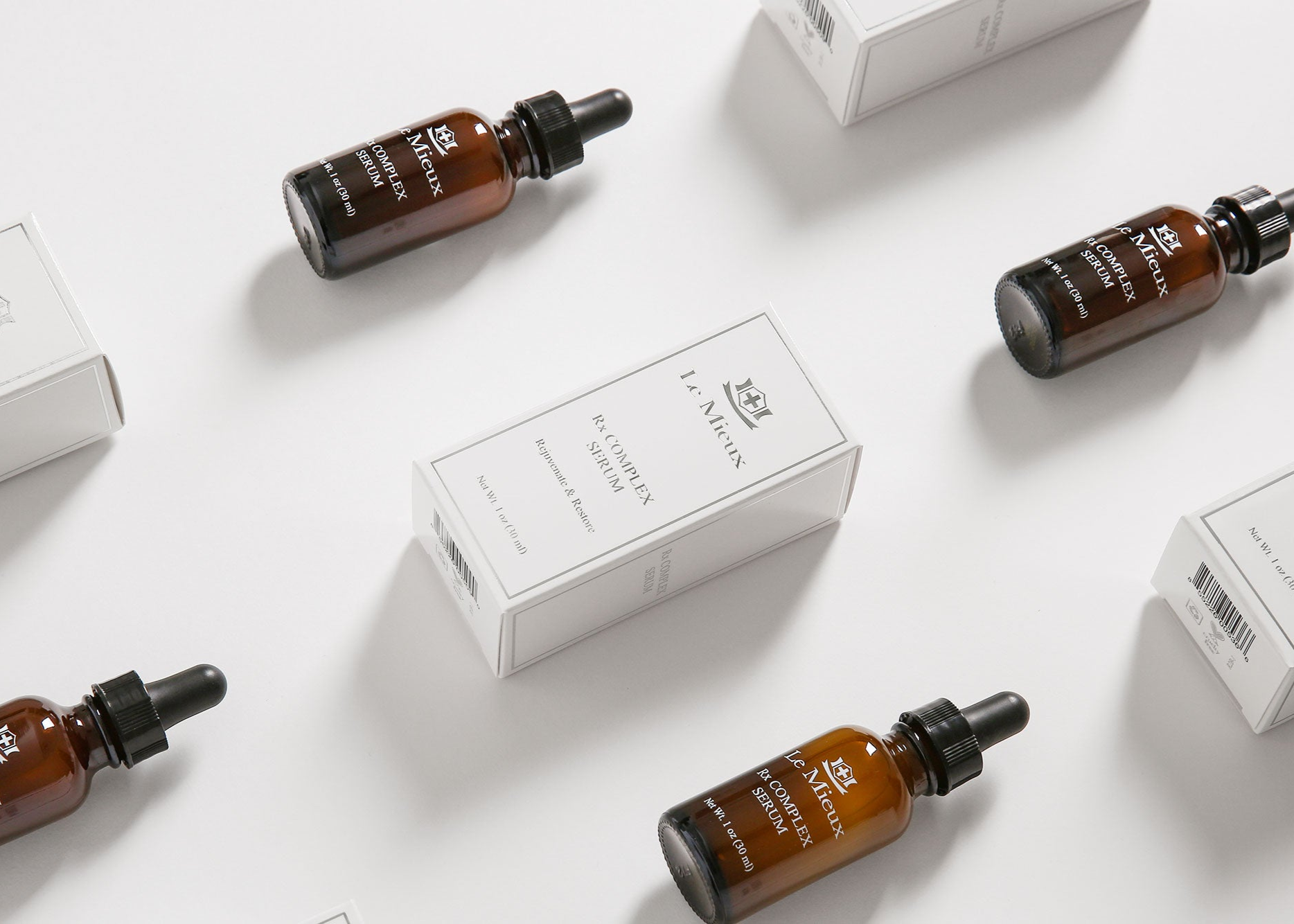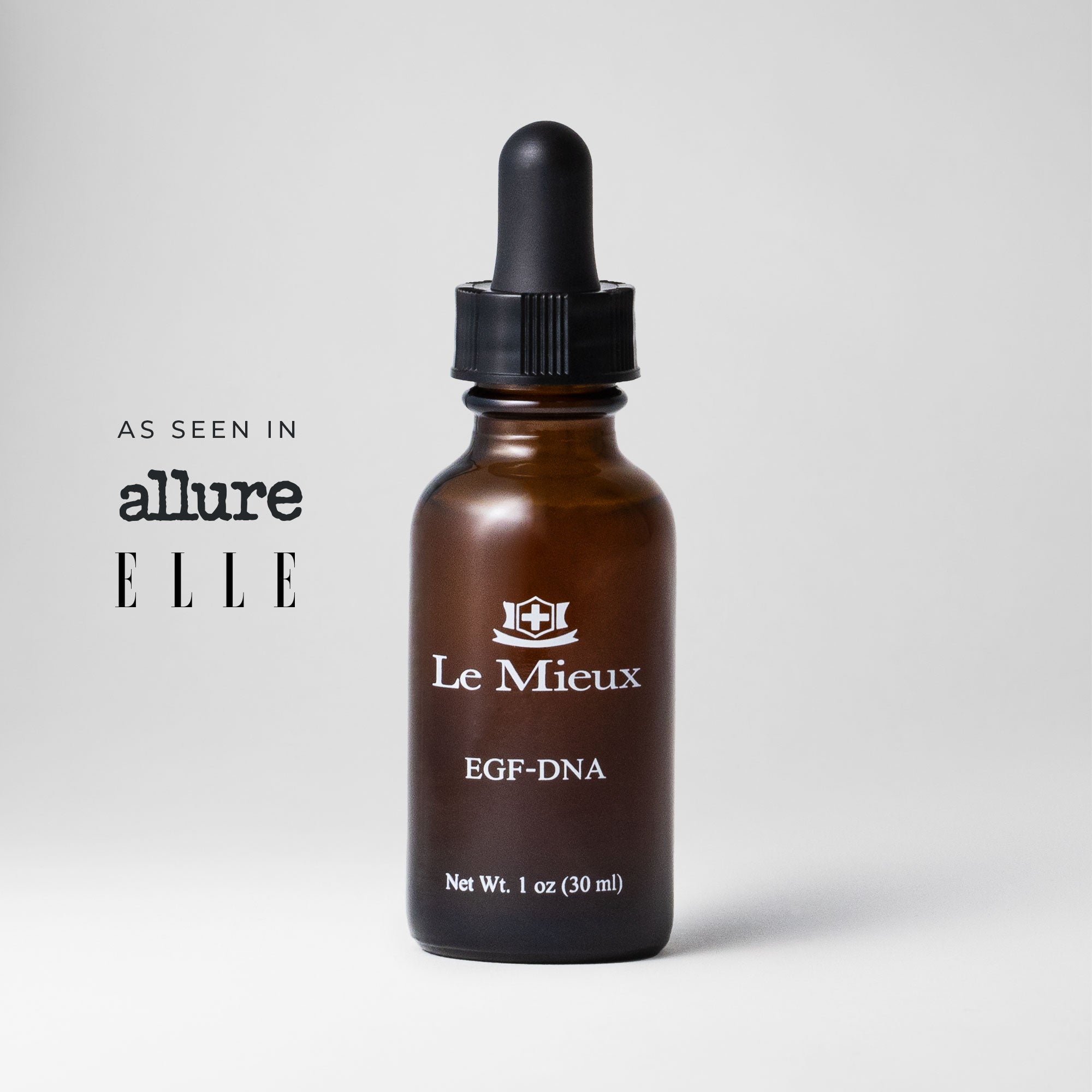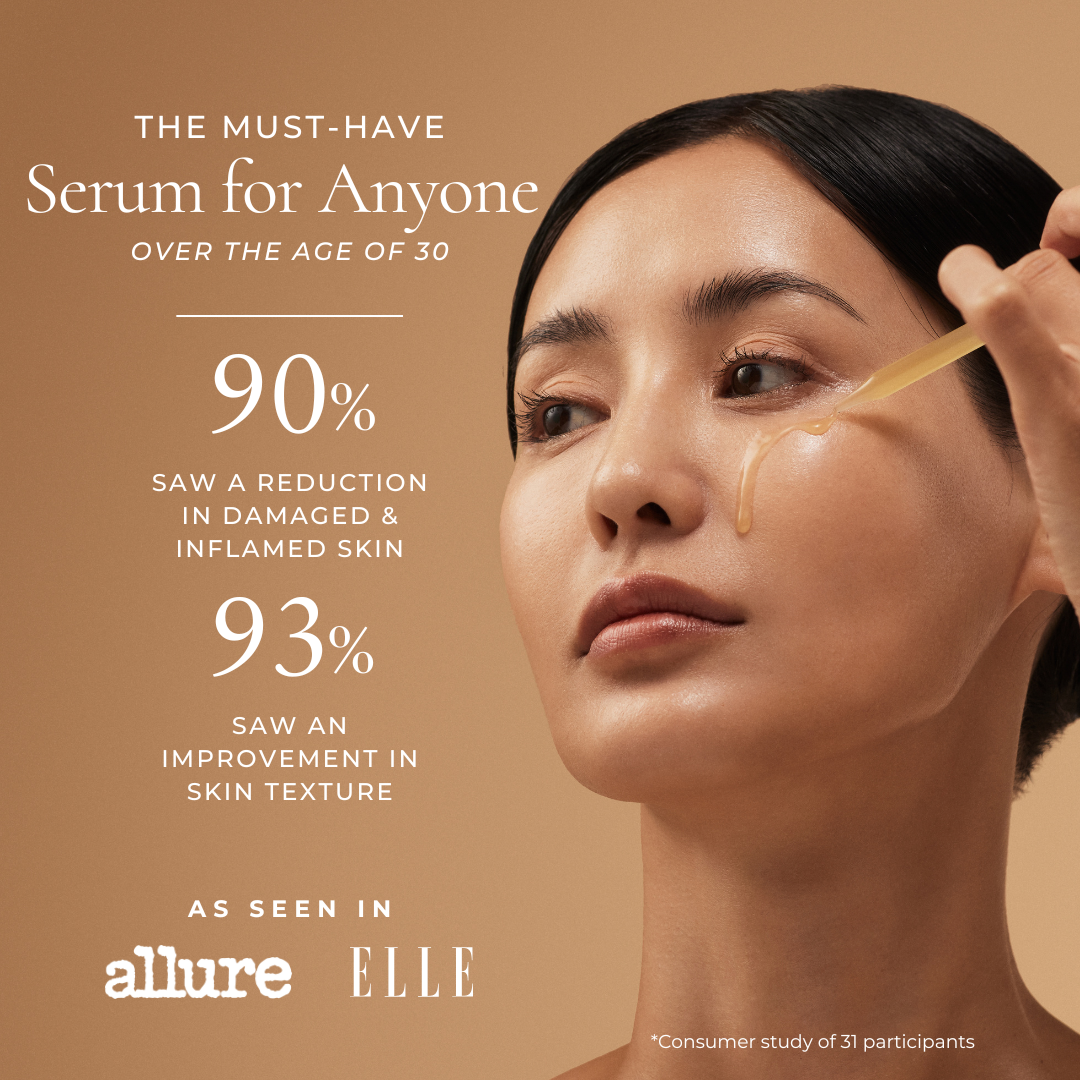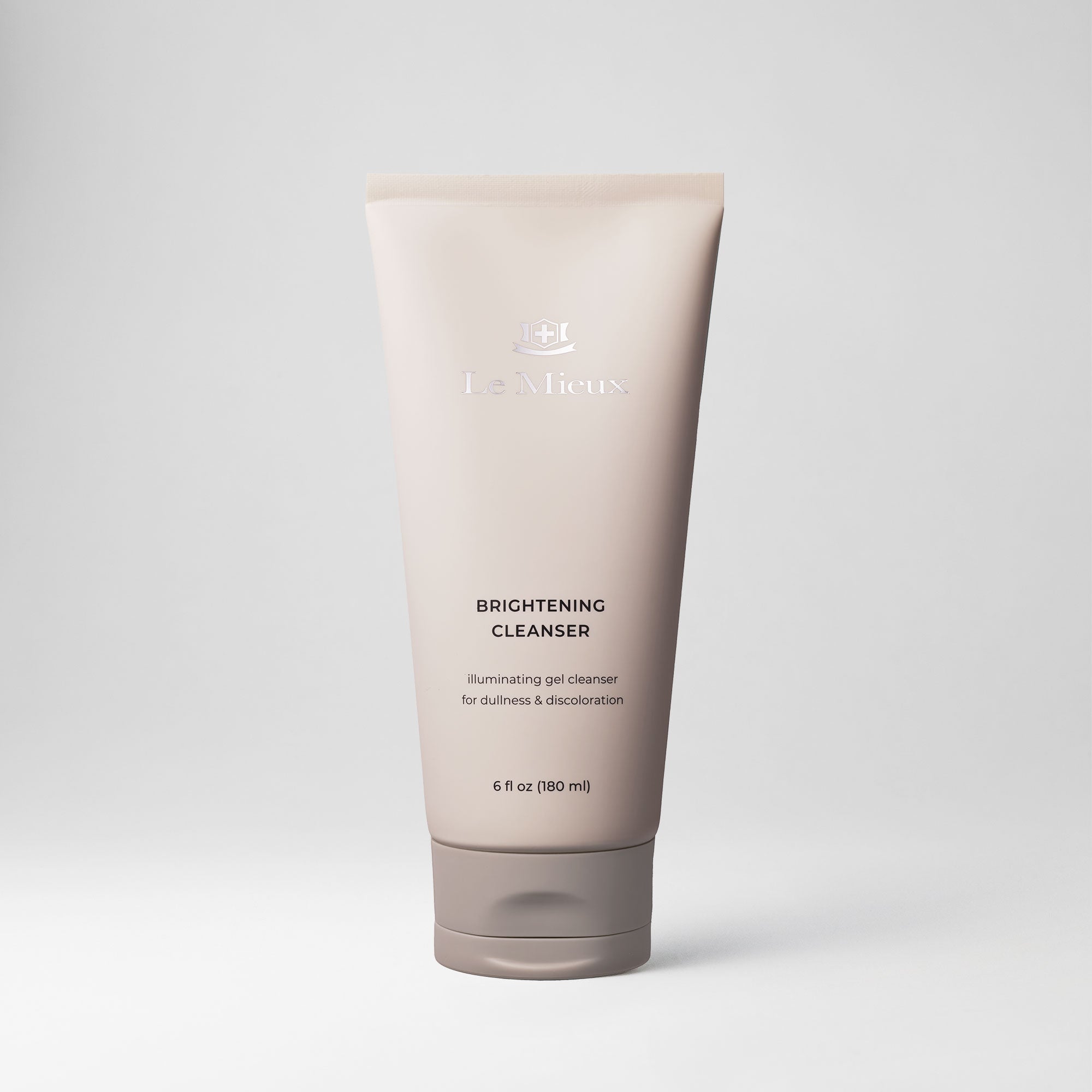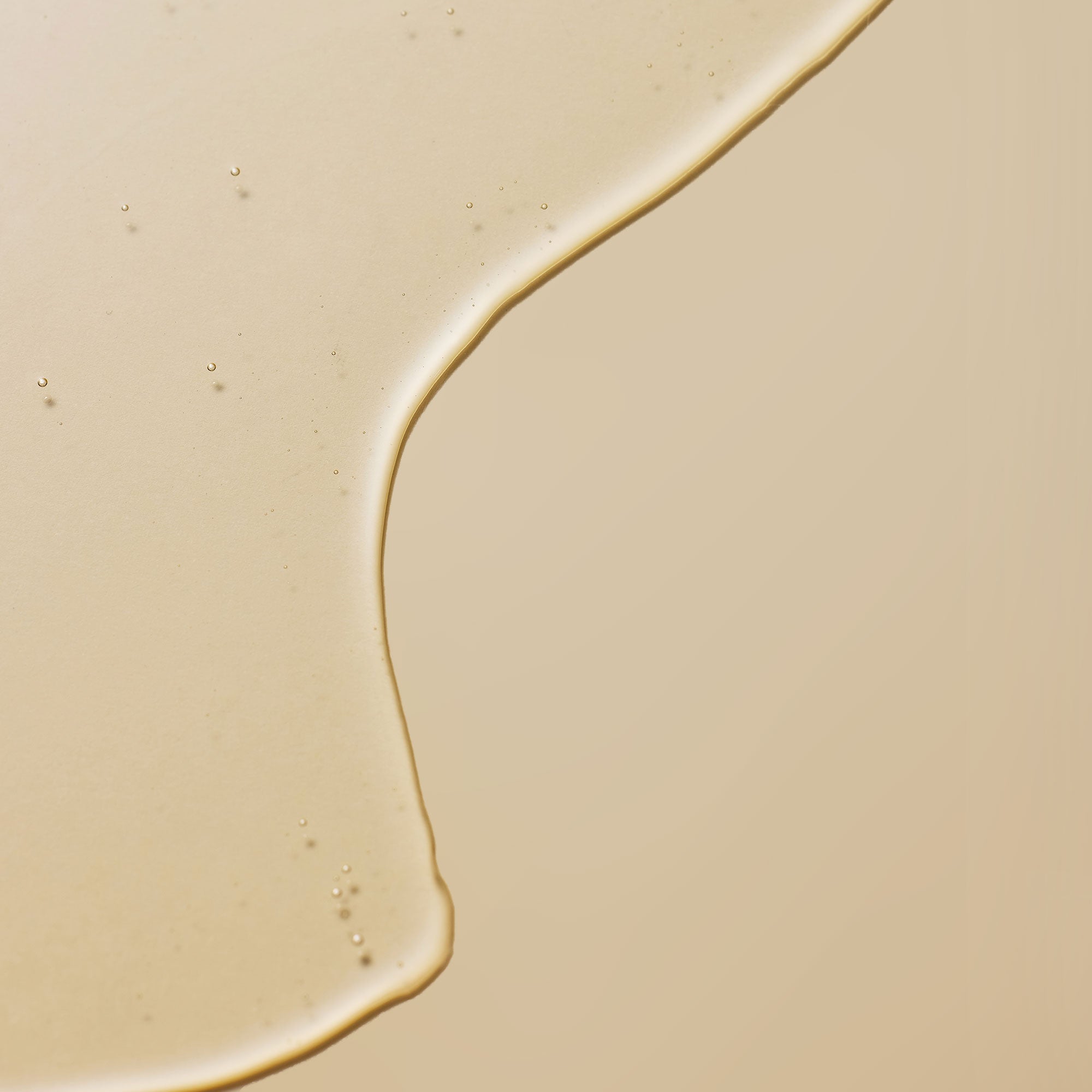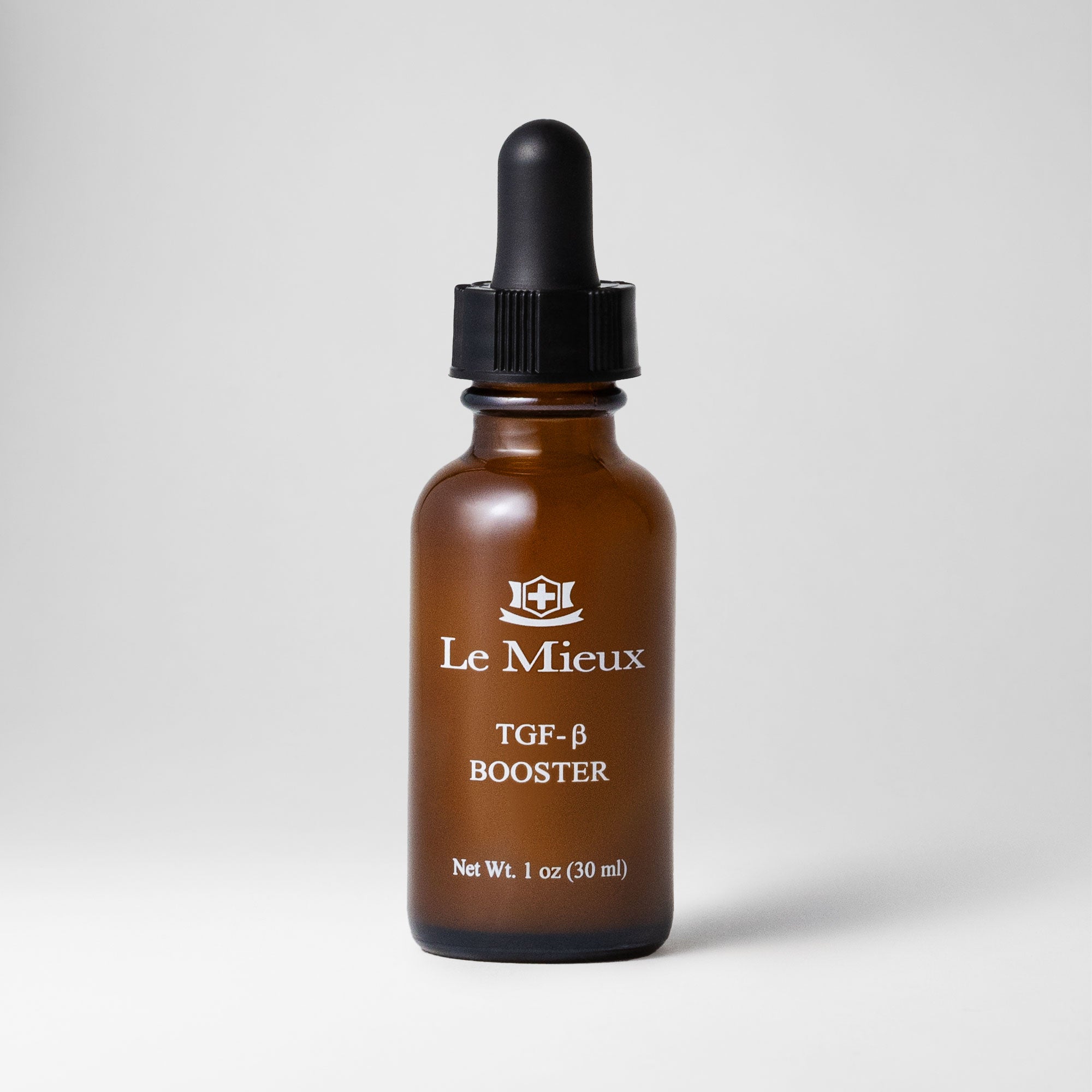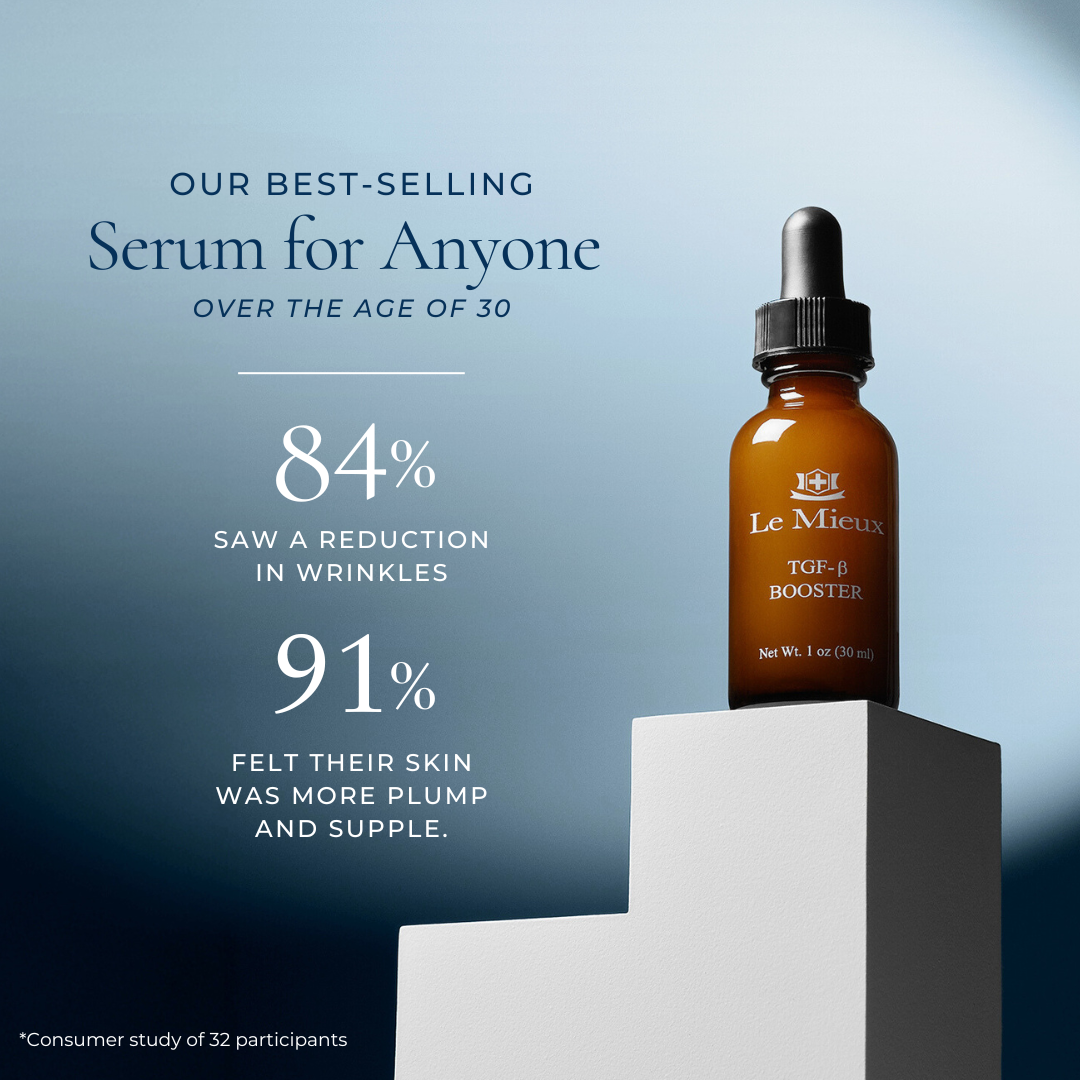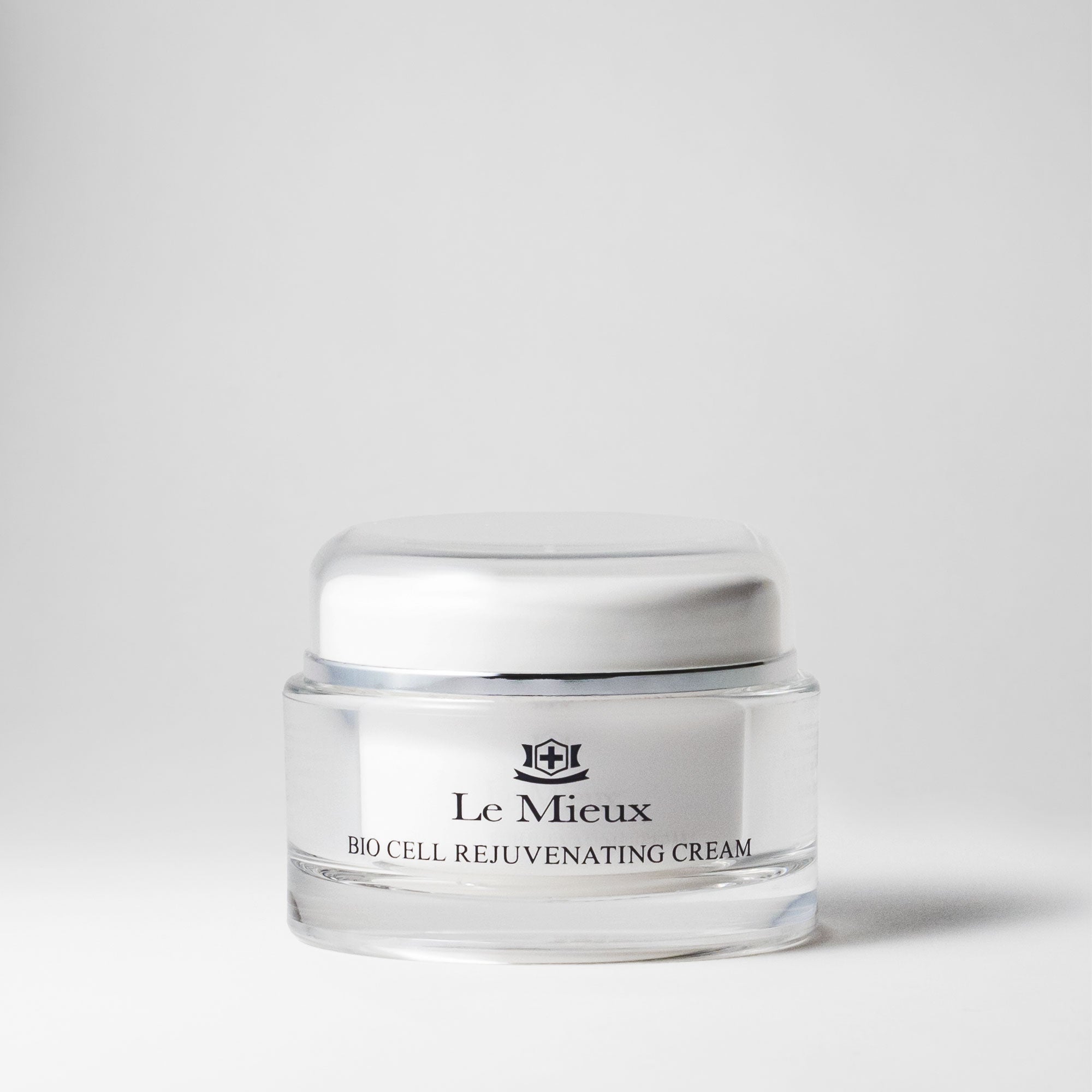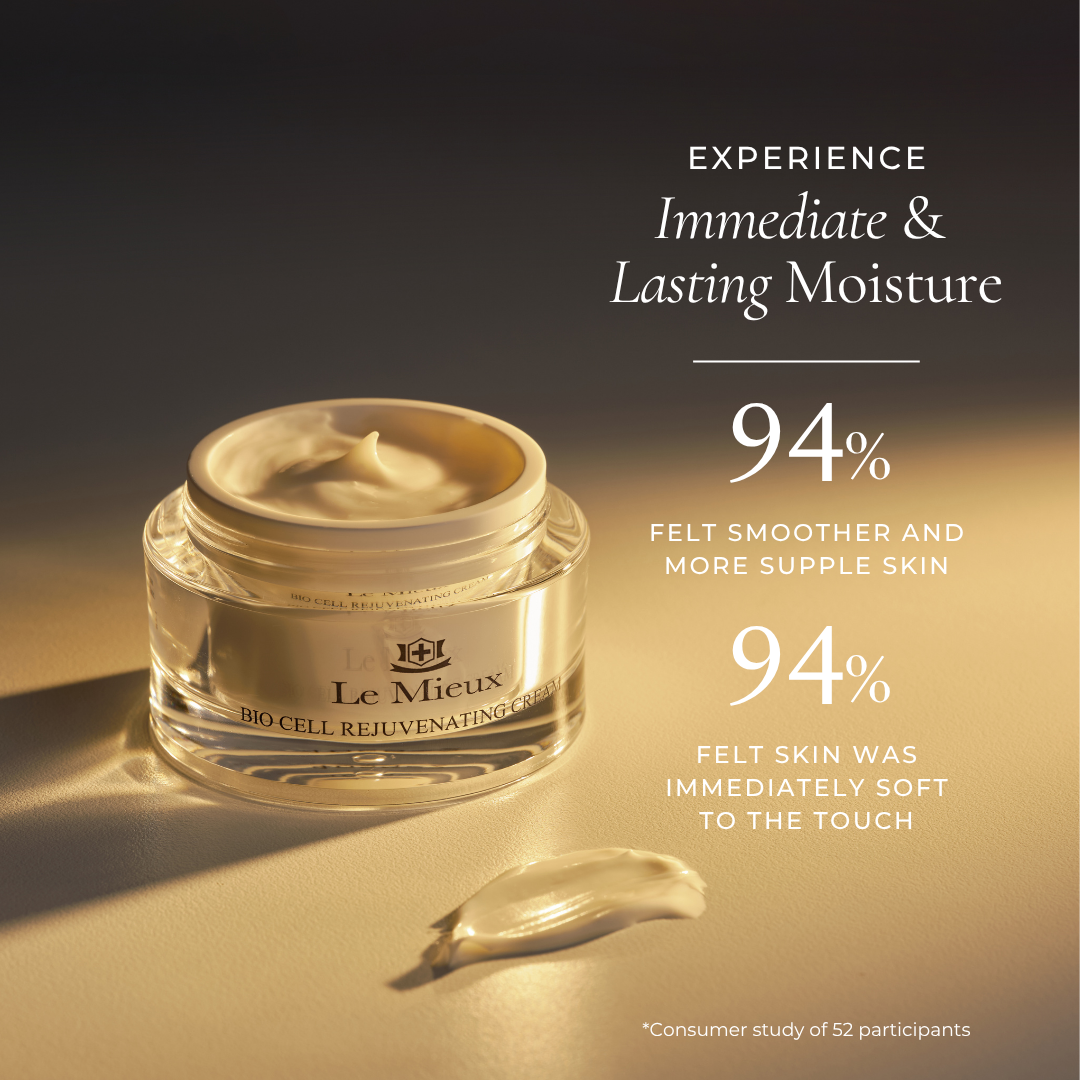What's better for skin, natural ingredients or chemicals?
Wait—that's a trick question. Have you ever heard of "dihydrogen monoxide"? Sounds like an intimidating chemical, but it's just a fancy term for regular water, H2O. In fact, every substance is made of chemicals—YES, even plants. That's because any chemical is made up of atoms and molecules, which can occur naturally or can also be synthesized artificially.
So, without using the word "chemicals," a better question might be: "What's better for skin, natural ingredients or synthetic ingredients?" In skincare products, "natural ingredients" are derived from flowers, leaves, roots, bark, marine sources, soil (clay), minerals, and so forth. On the other hand, synthetic ingredients are created in a lab, and are often categorized as "cosmeceuticals."
MOTHER NATURE, SISTER SCIENCE, AND AUNT HYBRID
There's really no need to have natural ingredients and synthetic ingredients as two separate choices, as if they were polar opposites. In fact, natural ingredients are often the very source of cosmeceuticals, and in turn, cosmeceuticals can help promote, deliver, and even magnify the effects of natural ingredients.
Imagine a third choice: a symbiotic hybrid, when the benefits of natural ingredients are amplified by scientific advancements with the goal of enhancing skincare. How? By using microencapsulation, plant stem cells, and plant-derived cosmeceutical ingredients, formulators are redefining the role of “natural ingredients” in skincare.
THE KRYPTONITE OF NATURAL INGREDIENTS
Skincare formulators face many challenges when working with natural ingredients, such as concentration, stability, and delivery.
Challenge #1: Concentration. Some plant extracts would need to be applied in large quantities to provide the desired result. On the other hand, certain essential oils can be irritating to the skin when applied topically. In fact, just because an ingredient is identified as natural, does not necessarily mean it is well suited for everyone’s skin or will prevent allergic complications.
Challenge #2: Stability. When separated and isolated from their natural source, natural actives can undergo stability issues due to sensitivity to light, oxidation, temperature, and pH levels. The molecules break down and lose potency, which reduces or even destroys their effectiveness. For example, vitamin C extracted from a natural source is known for reducing melanin production, fading hyperpigmentation, inhibiting free radicals, and boosting collagen. However, when exposed to light and air, some forms of vitamin C oxidize, lose efficacy and may even damage proteins and DNA.
Challenge #3: Delivery. The smaller the molecule, the more easily it is absorbed by skin, but larger molecules need a vehicle to allow them to pass through the stratum corneum. Water-soluble ingredients can't effectively penetrate skin's lipid layer, and oil-soluble ingredients might be too large or too unstable to pass through. The good news: Many natural moisture factors and antioxidants stay on the top layer of the skin to soothe, hydrate, plump, and maintain the moisture barrier. The bad news: Without effective concentration, stability, or delivery system, many natural ingredients won't effectively penetrate skin's protective barrier.
Solution: Natural ingredients and cosmeceuticals don't have to battle it out when they can work in perfect harmony. The science of encapsulation technology can be married to the power of natural ingredients. By using microencapsulation, plant stem cells, and plant-derived cosmeceutical ingredients, formulators are redefining the role of "natural ingredients" in skincare.
MICROENCAPSULATION: SKINCARE SHUTTLE
Like shuttles that deliver people to their destination on time without losing their luggage, microencapsulated natural ingredients
1) reach the targeted location,
2) do not lose their potency,
3) are released in a timely manner.
So, how does encapsulation impact natural ingredients and the skin? The stratum corneum, the top layer of skin, is a barrier protecting the body from bacteria, environmental damage, and moisture loss. Microencapsulation technology allows natural ingredients to be absorbed through that protective layer. It begins with an outside shell material ("encapsulant") that prevents the natural active ("core") from getting out before it reaches the targeted area, and blocks other material from getting inside.
Commonly used encapsulation substances include wheat proteins, soy, natural lipids such as phospholipids, liposomes, or beeswax, and polysaccharides like carrageenan from algae and chitosan from sea crustacean shells.
For example, vegetable-derived liposomes function as water soluble and oil-soluble carriers that easily pass through the stratum corneum. These microspheres smuggle in natural actives that are hydrophilic (water soluble) as well as actives that are lipophilic (oil soluble). Once absorbed, the skin is sealed with a micro-thin, flexible film to reduce transepidermal water loss (TEWL), dehydration, or the evaporation of moisture within skin.
En route to the targeted site, the shell material prevents the active ingredient from degrading due to exposure to light or air, which maintains the ingredient's stability and efficacy. The core is released when there is a particular trigger, such as heat, pH, moisture, enzymes, diffusion, or dissolution. With a controlled release over time, the natural active is delivered to targeted areas at its full potential to provide anti-inflammatory and anti-aging skin benefits. This type of delivery system has an extremely low potential of skin irritation as the active targets wrinkles, hyperpigmentation, atopic skin, rosacea, post-treatment skin, wound sites, and other skin issues.
HELLO, PLANT STEM CELL TECHNOLOGY
Many of the most potent natural ingredients depend on microencapsulation to provide skin renewing and healing benefits, and in a particular, the growing advancements in plant stem cell technology. Since some plants have a built-in system for protecting themselves from harsh environmental conditions, plant-derived stem cells have strong antioxidant and anti-inflammatory benefits. Formulators take advantage of these properties by including plant-derived stem cells in skincare products that provide potential anti-wrinkle, antioxidant, and anti-aging benefits. Again, science steps in—plant stem cells are not simply extracted from vegetation or fruit and dropped into a skincare formulation. Instead, they are cultured in labs where scientists and formulators have more control over the purity and quantity of the anti-aging substance produced by the plant, away from contaminants like pollution or pesticides. Antioxidants and other nutrients in the stem cells of the plant can therefore be more powerful when cultured in the lab for use in skincare products.
THE NUMBER ONE RULE IN SKINCARE
In effective skincare, exfoliation is essential. No matter how many skin-loving ingredients are put onto skin, they cannot interact with other molecules and cellular processes if dead skin cells, excess sebum, or makeup residue are in the way. What is the number one rule in skincare? You must keep skin exfoliated and hydrated for product to be effectively absorbed into the skin.
Exfoliants like alpha and beta hydroxy acids derived from natural substances provide multiple skin benefits. Encapsulated in liposomes, they can be delivered into skin with a lowered chance of skin irritation. Look for exfoliants containing phospholipids or liposome carriers along with the appropriate hydroxy acid or natural fruit enzyme that suits the specific skin concern.
- Azelaic acid (from wheat, rye, or barley) minimizes hyperpigmentation, reduces inflammation, and clarifies pores.
- Bromelain (enzyme derived from pineapple) clears away surface debris while providing antioxidant benefits.
- Citric acid (from citrus fruits) serves as antioxidant, exfoliant, and skin lightener.
- Glycolic acid (from sugar cane) smooths lines and wrinkles, reduces hyperpigmentation and dark spots, and promotes cell regeneration.
- Lactic acid (derived from milk) softens, smooths, and improves skin tone.
- Mandelic acid (derived from bitter almonds) is great for sensitive skin as it reduces enlarged pores, targets acne, smooths lines and wrinkles, and brightens.
- Papain (enzyme from papaya) promotes exfoliation by digesting keratin protein.
- Salicylic acid (a BHA from willow bark) targets congested pores, minimizes pore size, and helps control sebum production.
MOTHER NATURE’S MAGIC
Keep in mind that natural ingredients aren't limited to plants and algae—they also include minerals and clays. In fact, whether encapsulated or not, some herbs, plants, clays, and algae contain a mother lode of skin-loving minerals, with benefits for your individual skin issue.
-
For dry, mature skin: Along with encapsulated plant and fruit stem cells, here are some powerful botanical actives and skin-loving minerals to look for in anti-aging formulations:
- Allantoin (from the comfrey plant) soothes sensitive skin and helps stimulate skin cell regeneration.
- Algae extracts, such as ascophyllum nodosum (ANK), chondrus crispus, porphyra yezoensis, and other mineral-rich blue, green, brown, and red algae extracts create a moisture cushion for stressed cells.
- Argan oil contains high levels of omega fatty acids and vitamin E to seal in hydration and help strengthen skin structure, elasticity, and firmness.
- Avocado oil contains omega fatty acids, vitamins A, C, D, and E, and helps encourage hyaluronic acid synthesis , smooth away fine lines and wrinkles, and plump dehydrated and aging skin.
- Epigallocatechin gallate (from green tea) is a potent antioxidant that interacts with other organic molecules to combat and minimize oxidative damage.
- Mamaku leaf is a skin conditioner known for tightening and smoothing sagging skin.
- Tasmanian pepperberry contains high levels of anthocyanin and rutin flavonoids that intensify antioxidant activity, strengthen capillaries, and minimize dark circles and puffiness.
- White lily flower with anti-inflammatory properties calms stressed skin and decreases puffiness.
- Zinc, selenium, potassium, and magnesium are skin-saving minerals that help ward off environmental damage and help boost skin repair.
-
For irritated, eczema-prone skin: Prep, hydrate, and then seal in moisture. Look for products containing botanical oils or butters with anti-inflammatory properties and superior levels of phytonutrients that absorb quickly.
- Abyssinian is rich in vitamins A, B, D, E and oleic acid to balance skin, seal in moisture, and promote radiance.
- Açai fruit oil helps calm skin and soothe inflammation.
- Arnica contains high levels of magnesium, potassium, and calcium to help relieve skin irritation and promote skin renewal.
- Brazil nut oil with omega fatty acids and vitamins A and E moisturizes and helps fortify the skin’s natural protective barrier.
- Bulgarian rose water helps maintain skin’s optimal pH, balance oil production, and reduce redness.
- Caviar extract is rich in omega fatty acids that help soothe inflammation and plump away fine lines and wrinkles.
- Cupuacu seed butter provides vitamins and minerals such as calcium and selenium that improve moisture retention and promote barrier repair.
- Helichrysum flower helps calm skin irritation and inflammation while promoting skin cell regeneration and nourishing skin.
- Kukui nut oil helps relieve skin sensitivity and damage from UV rays and other environmental factors.
- Marula oil soothes and softens dry, irritated skin while the high concentration of omega-6 fatty acids and antioxidants help protect skin from environmental damage.
- Neem contains high levels of omega fatty acids, carotenoids, and vitamin E, which help restore skin's protective barrier and prevent moisture loss.
- Sacha Inchi is famous for up to 85% omega fatty acids, which help prevent dryness and inflammation.
-
For hyperpigmentation: Use phyto-derived ingredients containing natural tyrosinase inhibitors to block the conversion of amino acid tyrosine to melanin, which gives skin its color and is responsible for hyperpigmentation issues.
- Bearberry leaf extract helps inhibit darkness and discoloration.
- Red ginseng has an abundance of polyphenols, flavonoids, and antioxidants for improving microcirculation and oxygenation to help renew, tone, firm, and brighten skin.
- Licorice root extract has been shown to prevent tyrosinase activity by up to 50 percent.
- Kakadu plum is one of the world’s richest sources of vitamin C to help control melanin production and improve radiance.
- Kojic acid (by-product of fermentation process of rice wine) is very effective in fading out darkness and discoloration, with a lower potential for skin irritation.
- Mulberry root extract provides skin brightening and antioxidant benefits to protect against dark spots and uneven skin tone.
- Pearl powder is a treasure trove of minerals like calcium, magnesium, and selenium that help improve the appearance of dull, blotchy skin.
- Soy interferes with melanin transferring to top layer of skin and evens out discoloration and tone.
-
For oily, blemish-prone skin: Use pore-clearing exfoliants with alpha hydroxy acids, masks that contain mineral-rich clays, and non-comedogenic moisturizers.
- CBD Hemp oil (from cannabis) moisturizes without clogging pores and helps regulate skin’s natural oil production.
- Cinnamon bark provides antiseptic and anti-bacterial benefits to assists in tissue repair.
- Jojoba oil targets clogged pores, balances sebum production, and helps reduce inflammation.
- Kaolin, Bentonite, or Montmorillonite are mineral-rich natural clays that remove dead skin cells and other debris, absorb excess oil, and relieve irritated skin.
- Mandelic acid (from almonds) is often used in products for acne, melasma, or post-inflammatory hyperpigmentation (PIH) from acne.
- Salicylic acid (from willow bark) minimizes congested pores and excess oil while refining skin texture.
- Sulfur is a pore de-clogging mineral with detoxifying anti-bacterial properties that also soaks up excess oil and reduces inflammation.
- Tea tree oil with bacteria-fighting properties helps purify pores, soothe inflammation, and clear excess sebum.
WHEN IS A CUCUMBER NOT JUST A CUCUMBER?
Plant science is growing. The burgeoning trends of plant stem cells, minerals, and even plant-derived peptides have firmly rooted themselves in skincare. It's time for a different perspective on our expectations of using natural ingredients to improve skin structure and health. Technology married with the potential of botanical actives and therapeutic minerals can exponentially change the face of skincare. But is this hybrid the best solution?
That depends. Every person’s skin is unique. It’s important to identify your specific skin concerns and match them to ingredients and products that would be most beneficial. In some cases, natural ingredients are not necessarily better. In fact, some herbal extracts may cause serious sensitivities for certain individuals. Just because it's natural doesn't mean it's automatically going to be non-irritating! On the other hand, even though some synthetic compounds like parabens and phthalates have been identified as potentially dangerous to overall health, not all bio-engineered ingredients are skin's enemy.
IN A NUTSHELL
To sum up, in these days of skincare technology, science can greatly enhance the power of natural ingredients. Formulators can lock the vitamin C molecule to make it stable. They can coat the molecules of natural ingredients with natural liposomes to ensure efficacy. microencapsulation allows multiple active ingredients to reach targeted areas and perform optimally. Airtight, opaque containers or airless pumps help prevent some ingredients from oxidizing when exposed to air or light. As technology bolsters the effects of plants and minerals, leading-edge research may soon push skincare decades ahead of where we are today.
FUNCTIONAL FOODS
Lastly, maintaining healthy skin is not limited to using topical skincare products. The food you put into your body can definitely impact skin. It's not unusual for some skin conditions to become aggravated because of internal factors, like vitamin or mineral deficiencies. However, nutraceuticals, known as "functional foods," provide dietary vitamins, minerals, fatty acids, amino acids, and antioxidants. These systemic elements also affect the appearance of healthy, youthful-looking skin. Approach your skincare from the inside-out as well as the outside-in!
Natural ingredients? Cosmeceuticals? We don't need to choose sides. Skincare doesn't need to be politicized if we take the best of both worlds in order to give a boost your skincare results. Enjoy the powerful fusion of the botanical and clinical worlds, distilled and captured into a bottle or jar!
Read more
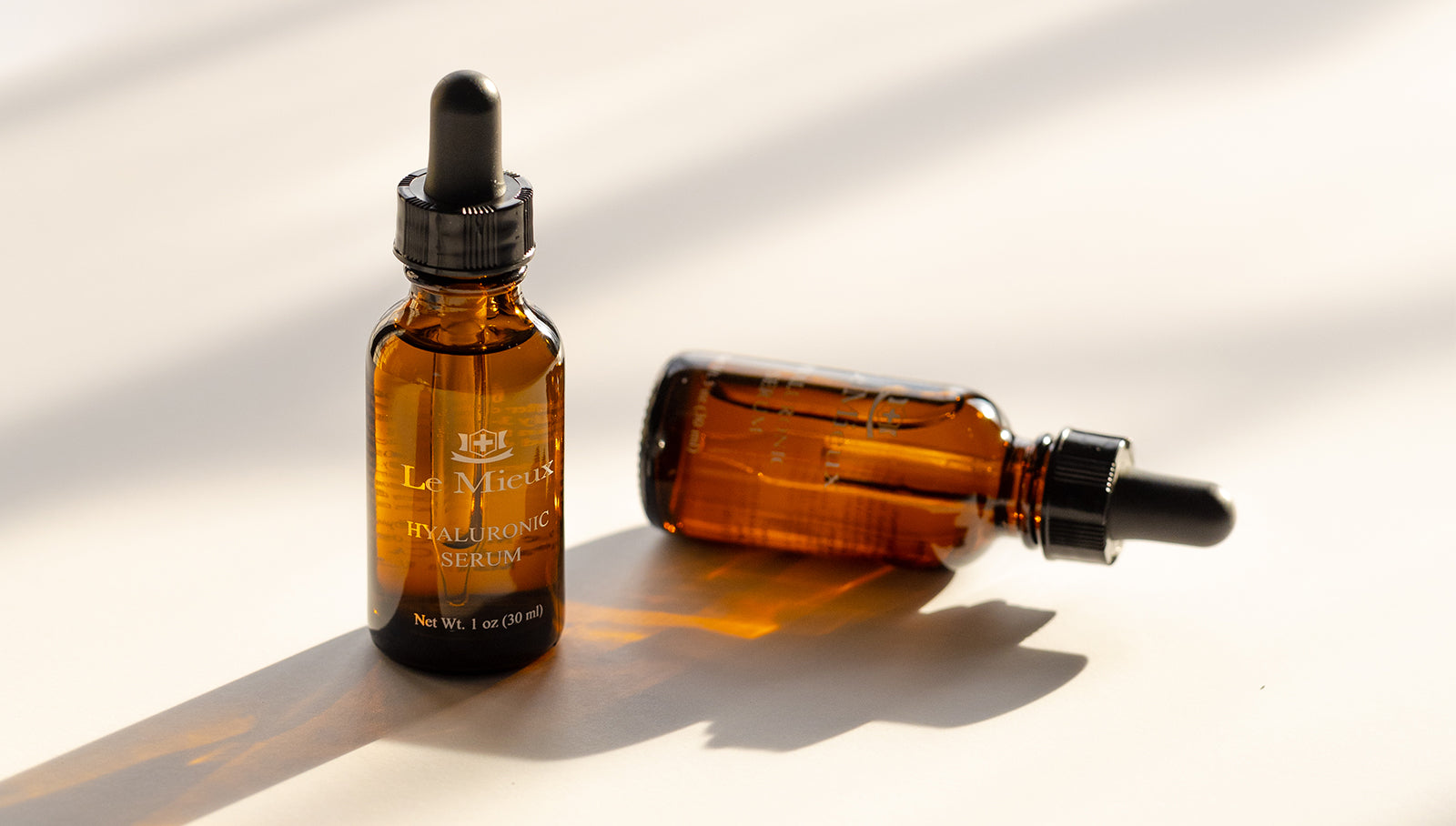
Did you know that an essential anti-aging ingredient is already deep within your skin?

For year-round blemish control, check out these helpful lifestyle & product tips. How many of them are you already doing?


